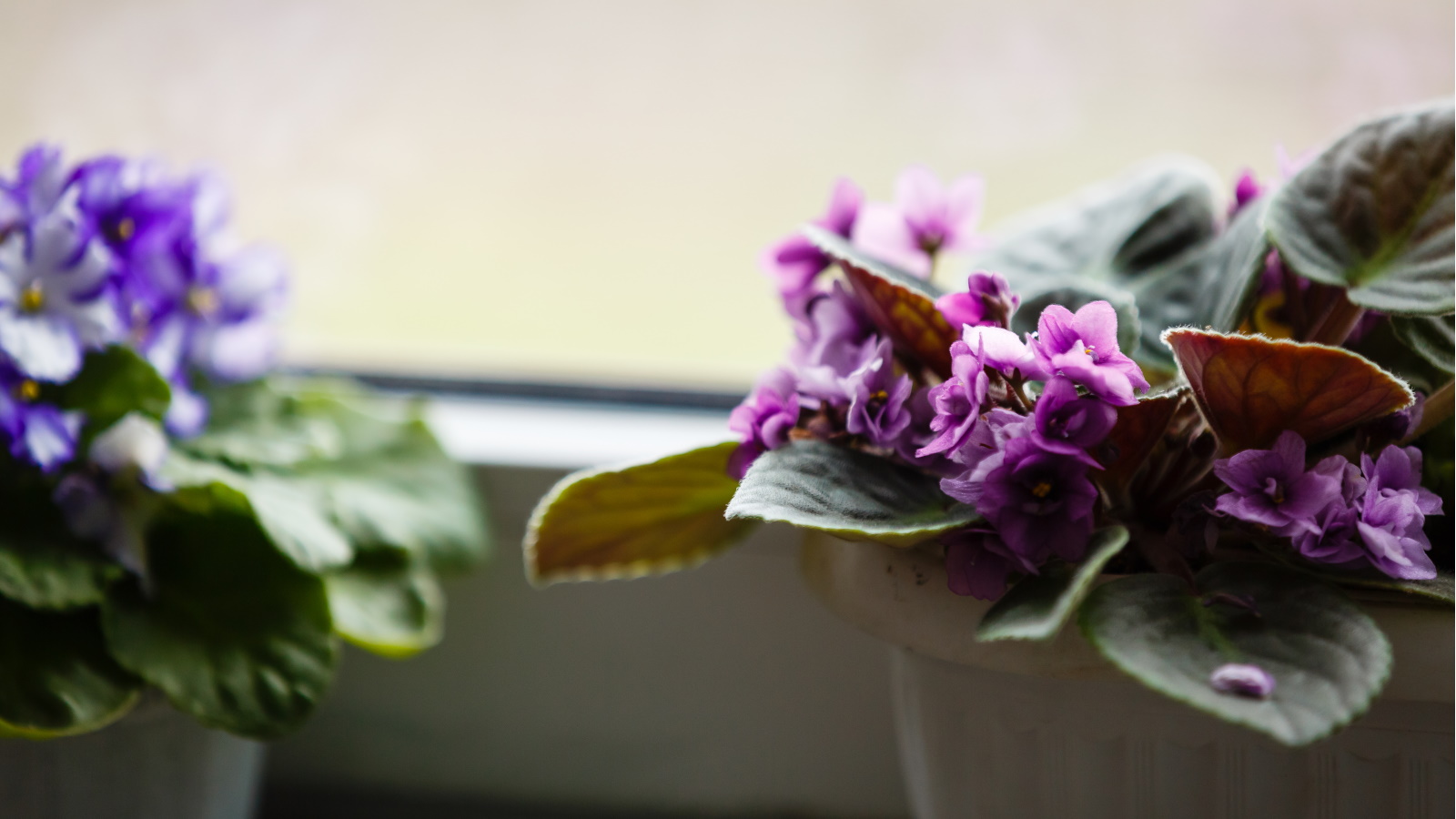Why are my African violet leaves drooping? Experts reveal 5 common causes
Find out why your African violet might be looking worse for wear


When you choose the best indoor flowering plants to decorate your home with, it can be disheartening to see them start to wilt and droop.
African violets are beautiful, compact flowering houseplants that are often susceptible to drooping foliage, but don't panic - you're likely making one of these common mistakes that can be easily rectified.
We've spoken to indoor plant experts to find out what typically causes African violets to droop and how it can be resolved so that yours can bloom happily once again.
5 causes of drooping African violets
If you notice your African violet drooping, don't be too quick to give up. It's likely you've made one of these five common mistakes. Luckily, we've gathered expert advice on drooping African violets and how to prevent it happening.
1. Overwatering

There's an art to knowing how to water houseplants and incorrect watering often causes many indoor plants to take a toll.
Oversaturating your African violet is a common cause for leaves to droop. These plants are native to warmer climates of eastern African countries where they retain water well. It's important to replicate this when growing it as a houseplant.
'To address this issue, water your plant when the top inch of soil is dry to touch. Don’t make a fixed schedule because the watering frequency will vary based on humidity, temperature, light and more,' says Vladan Nikolic, houseplant expert from Mr. Houseplant.
Design expertise in your inbox – from inspiring decorating ideas and beautiful celebrity homes to practical gardening advice and shopping round-ups.
'African violets are prone to root and crown rot, so you should use well-draining soil and let the excess water drain,' he adds.
Specific soil for this plant is widely available, like this African violet potting mix from Perfect Plants nursery, which will ensure your plant is able to drain well.
You should also take care not to splash water on the foliage of African violets because this can lead to permanent spotting on their fuzzy leaves.

Vladan Nikolic is a houseplant expert with over 10 years of experience. He is the founder of the houseplant care blog Mr. Houseplant and is a social media influencer for houseplants with over 500,000 followers.
2. Underwatering

Not only is it possible to overwater your African violet, these small blooming plants are also often underwatered which can also cause drooping foliage.
'African violets droop when they are dry,' says indoor plant expert Lisa Eldred Steinkopf from the Houseplant Guru. 'Keep them evenly moist. They do not like to dry out completely. Inconsistent watering is the killer of African violets,' she adds.
A good way to monitor moisture levels is by taking into account how warm it is, for example watering more regularly in the summer, as well as using something like a moisture meter, like this moisture meter from Amazon.
As with other tropical indoor plants, African violets also love humidity. Regularly misting them, like with this mister from Plants.com, can keep them at a happy moisture level between watering.

Lisa is a houseplant expert who runs her blog The Houseplant Guru with over a decade of professional experience at Steinkopf Nursery and Garden Center in Michigan. As a child, Lisa helped her grandma tend to African violets and other houseplants. Since then, Lisa has forged a career providing houseplant advice, holding lectures and writing for publications across the US.
3. Direct sunlight

The fuzzy foliage of African violets is sensitive and will show signs of being unhappy if they aren't given the right lighting conditions.
'Too much direct sunlight can scorch the leaves and make them droopy,' says Vladan.
African violets grow naturally low to the ground where they are partially shaded by canopies of trees in rainforests. Direct sunlight can therefore harm their foliage and hinder their appearance.
Using a sheer curtain can help filter sunlight if your African violet sits in a particularly bright spot, like these sheer curtains from Anthropologie.
4. Insufficient light

The best lighting for African violets is bright, indirect light. Unlike low light indoor plants, these flowering plants can't tolerate darker corners and need sufficient light to stay happy.
'The best window is an unobstructed east or west-facing window,' says Lisa.
Lisa also suggests growing African violets under lights, like this grow light from Amazon. This allows you to monitor and change the lighting as needed, preventing your African violets from being over or under-exposed to light.
'Ideally, give your African violet at least 10,000-15,000 lux of bright, indirect light,' says Vladan.
5. Pests

If you own multiple houseplants, it's likely you're familiar with common pests like fungus gnats and spider mites. Some indoor plants are more susceptible than others and some pests can cause adverse effects.
'African violets can be infested with spider mites and mealybugs. Pests cause leaf curling, drooping and stunted growth,' says Vladan.
The best way to prevent pests infesting your African violets is by ensuring you have purchased a healthy plant and providing optimal conditions to keep it healthy, including sufficient lighting and correct watering.
'To treat mites, use neem oil or insecticidal soap containing sulfur or tau-fluvalinate,' Vladan suggests. 'To treat mealybugs, wipe the leaves with a cotton swab dipped in rubbing alcohol. Neem oil would work too.'
FAQs
Why do my African violet's leaves look dusty?
The foliage of African violets is fuzzy, but they are also very delicate and can have a number of problems if not cared for properly. A layer of white dust on foliage may be powdery mildew, a fungal disease caused by low light, poor air circulation and waterlogging.
The best way to treat powdery mildew on African violets is to use a soft brush to remove the white layer and provide optimal growing conditions going forward to prevent it happening again. Take care not to splash the foliage as it could cause permanent spotting.
It can be a concerning sight when your beloved houseplants are looking worse for wear, but don't be too quick to lose hope. African violets are beautiful flowering plants, but they can be quick to droop if they aren't receiving optimal care. Try adjusting the growing conditions of your African violet to avoid making more common houseplant mistakes and keep it looking happy and bright. When your African violet is looking happier, why not propagate it to have more of these stunning flowering plants.

Tenielle is a Gardens Content Editor at Homes & Gardens. She holds a qualification in MA Magazine Journalism and has over six years of journalistic experience. Before coming to Homes & Gardens, Tenielle was in the editorial department at the Royal Horticultural Society and worked on The Garden magazine. As our in-house houseplant expert, Tenielle writes on a range of solutions to houseplant problems, as well as other 'how to' guides, inspiring garden projects, and the latest gardening news. When she isn't writing, Tenielle can be found propagating her ever-growing collection of indoor plants, helping others overcome common houseplant pests and diseases, volunteering at a local gardening club, and attending gardening workshops, like a composting masterclass.